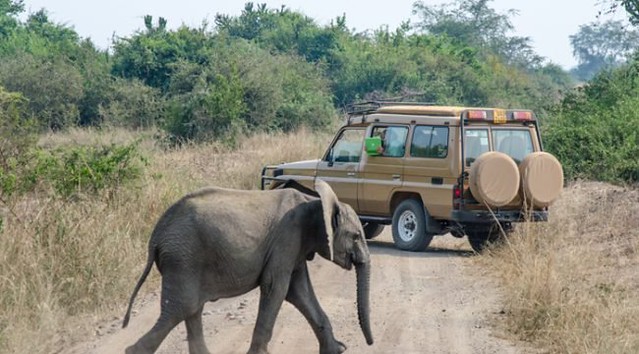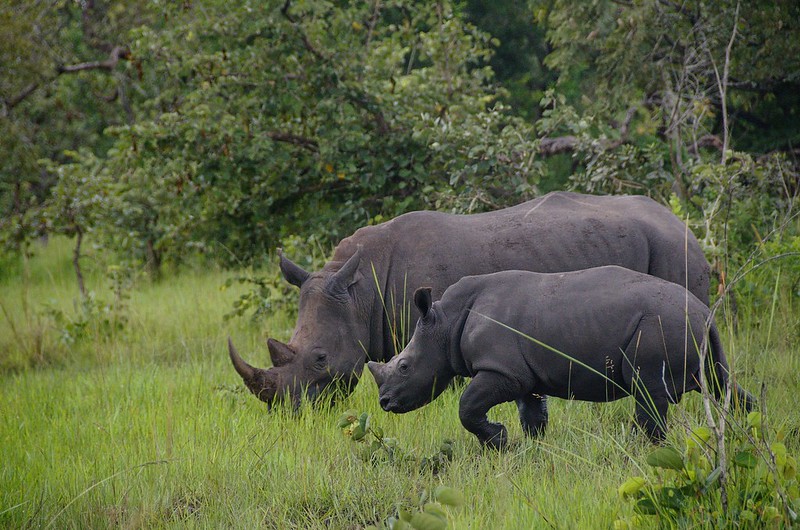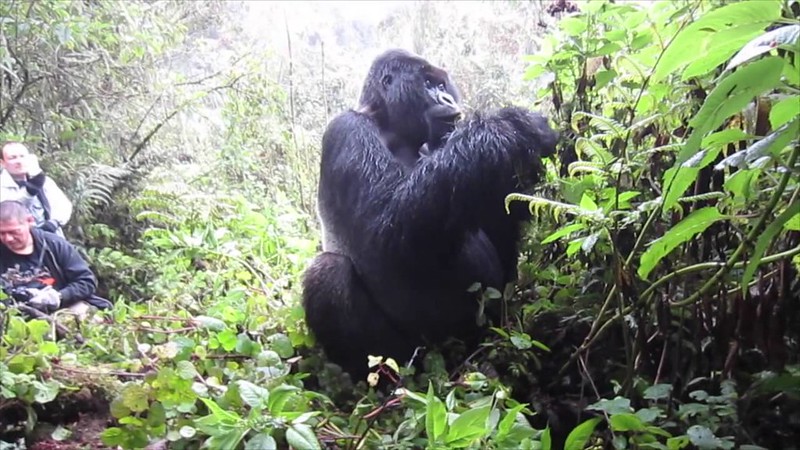10 Tips for Saving Money on Your Uganda Budget Safari. Embarking on a gorilla trekking…
Moremi Game Reserve Botswana.
Moremi Game Reserve Botswana.
Named for the Batswana tribe’s chief, Moremi, the Moremi Game Reserve in Botswana is located on the delta’s eastern edge.
Surprising and unexpected contrasts are created by the combination of permanent water and dry regions in the Moremi Game Reserve, which spans a large portion of the eastern side of the Okavango Delta. Chiefs Island and the Moremi Tongue are two notable geographical features of the Reserve.
If you are looking for a great spot to see savannah animals and birds in their natural habitat, go no further than Moremi Reserve. The leopard and the very uncommon African wild dog both call the densely forested regions their home. In the northeast, on the boundary of the Moremi Game Reserve, you’ll find Chobe National Park.
Surprisingly diversified for a Reserve of its size (5,000 sq km/1,900 sq mi), the Reserve has floodplains, lagoons, acacia forests, and mopane woodlands. The majority of the Reserve is located inside the Okavango Delta, with just around 30% of it being on mainland.
The great assortment of wildlife found in Moremi includes buffalo, giraffe, lions, leopards, cheetahs, hyenas, jackals, impala, red lechwe, and African wild dogs, among almost 500 bird species ranging from woodland inhabitants to water birds.
Moremi Wildlife Sanctuary Tours and safaris in Botswana
One of the top safari destinations in Africa, the Moremi Game Reserve is a sanctuary for African animals.
Exploring Botswana’s Moremi Game Reserve
Activities in Moremi Game Reserve, as well as all snacks and beverages or picnic lunches, are often included in the fully included prices offered by the smaller, more luxurious camps in the delta. Impressive wildlife watching is only one of the activities that highlight the unique and beautiful nature of the Okavango Delta.
![]()
Depending on the season and the area, each camp will offer a unique set of excursions. Due to the low volume of visitors and cars in Moremi, you are more likely to get excellent wildlife sightings when there are few, if any, other people around.
A Classical Canoe—The Mokoro
One of the most interesting things to do in Moremi and the Okavango Delta is to embark on a mokoro canoe safari. Batswana have long navigated the canals in dug-out canoes constructed of hard wood, called mokoro or makoro. In order to propel the mokoro through the shallow water, a single individual, known as a poler, stands at the canoe’s stern and uses a long, stout pole to propel the vessel.
To lessen their effect on the environment, mokoros are now constructed using fibreglass. Enjoying the environment and the pristine rivers while engaging in this pastime is a great way to unwind. Seeing birds and other animals is an added delight. You should plan ahead if this is an activity you really want to do while in Botswana since not all of the lodges and camps provide it. Get in touch with Monumental Expeditions and Safaris and we’ll be happy to provide our recommendations.
Hunting for fish
Motorboats are the norm for fishing in the Okavango, while mokoro excursions often include fishing as an activity. The delta isn’t available for fishing in the winter and spring, and most safari lodges practice catch-and-release fishing instead.
Driving Games
Taking a wildlife drive is an essential part of every safari, and Moremi wildlife Reserve is no exception. But, it’s important to note that wildlife watching drives may not be possible in some regions of the Okavango due to seasonal water levels. However, when safari vehicles traverse channels and/or wooden bridges in pursuit of animals, they could get somewhat wet if the water level is high.
Safaris for Birdwatching and Walking
Some camps also include walking safaris and guided birdwatching as vital activities. Get up close and personal with the enchanted Okavango Delta habitat here, from the most microscopic plants and animals to rare plains game species that inhabit no other area.
Cruises on the Water
When the water levels are high enough, several safari lodges provide motor boat game watching cruises instead of game drives.
Helicopter Adventures
There aren’t many high-end campgrounds in the delta, but the ones that do offer helicopter trips do charge more. This is a fantastic opportunity to explore the diverse species of the delta and to take in the breathtaking scenery from above.
Relating to Elephants
Elephant contact and wandering in the wild with Okavango elephants is another unique activity offered by a handful of sites. The orphaned elephants are cared for by the safari camp, and visitors are welcome to join them on morning bush walks, followed by breakfast in the bush while the ellies frolic and graze.
Adventures on Horseback
You may get up close and personal with native animals and birds on horseback safaris, which are offered by several safari resorts.
Optional Extras in Moremi
Some businesses in the delta’s eastern region provide the aforementioned services to those who choose to explore on their own. Camping at a bridge campground means you may enjoy the area’s motorboat tours and unique mokoro excursions without leaving the park.
How to Reach Moremi Game Reserve Botswana Tourism
Exploring Moremi on Foot
Only the dry ground areas to the east of the reserve, including the South Gate, North Gate, and Khwai parts, are accessible to tourists driving to Moremi Game Reserve. Two primary entry gates provide road access to Moremi. The first is located at the Khwai River, near Chobe National Park; the second is located only 90 kilometers from Maun and 30 kilometers from the North Gate.
Starting from Maun, the route is paved for 60 km before turning into a gravel road leading into the reserve. As the seasons change, the roads inside the Moremi Gate Reserve undergo varying degrees of wetness and dryness, from sandy in the summer to flooded in the winter.
The journey from Maun to Moremi’s South Gate takes less than two hours by car. On the way from Chobe National Park to Moremi, you may also enter the reserve via the North Gate. To access the Okavango Delta on your own, you will need a 4×4. It is necessary to fly in order to access the other portions of the delta.
Landing at the Delta
From Maun town and nearby airstrips/ports, the best way to access Moremi Game Reserve and the Okavango Delta is via light aircraft or helicopter transport. As the closest hub to the delta, Maun also happens to be home to an airport. From South Africa’s Johannesburg and Cape Town, as well as Gaborone and Kasane, close to Chobe, there are regional battles into Maun.
Air transfers between camps are an additional perk when you purchase a package deal with one of Botswana’s sister camps, and charter flights are yet another possibility. The flight time into the delta from Maun Airport is less than half an hour. Nearly every private safari lodge has its own airstrip, and most of those sites are serviced by charter firms. Transfers from the airstrips to the camps might be a mix of boat rides and game drives, depending on the location and season.
Exploring Botswana’s Moremi Game Reserve at its Peak: When to Go
MOREMI’S SEASONS
However, we would be more than happy to assist you in determining the optimal time to go. Botswana experiences both precipitation and drought. Although most tourists choose to go during the dry season, you should not discount the wet season entirely.
Because fewer people are staying at the lodgings during the rainy season, you can expect a more intimate stay. Child rules might also be more accommodating at this time. But since they are all small and intimate, the lodges and camps in the Moremi Game Reserve always have a personal touch.
A brief synopsis of each season follows.
Season without precipitation:
From May until November or December.
Perfect for an introductory safari.
The Moremi never has below-freezing nights and seldom scorching days.
Keep in mind that November weather may be unpredictable, with showers, sunshine, highs, and lows all possible.
Ouranosal season:
December to April.
February and January have the most precipitation.
Spectacular sky patterns may occur in the span of a few minutes, going from overcast to clear and back again.
Even while most showers are brief and intense, there are days when the sky stays overcast.
You must wear waterproof apparel; nevertheless, you should not allow the rain to hinder your activities.


